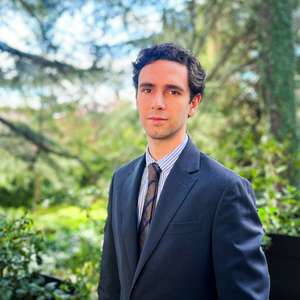At a time when the role played by education institutions is being put into perspective, it becomes clear that «people do not go to university solely for learning. There is much more than that», revealed Dror Poleg, author of Rethinking Real Estate, who was present at The Class Conference 2020, which took place last Thursday.
But what more is there within these spaces where studying comes first? There are social relations to be built, the share of knowledge and learning, a whole social sphere which was confined by the pandemic and limited to the digital environment. It is within this setting that Dror Poleg assumed that «the best way to create value is to tap into new scarcity, into things that are becoming more precious in this world. Currently, there is a scarcity of human connection, privacy, truth, meaning & agency, and education», she clarified.
These are the new needs which will force the real estate to think beyond traditional asset classes, once divided by core functionality, and rethink the value and purpose that space can offer to customers and investors alike.
One of the trends to be identified and brought up for debate concerns the role technology plays within the community, which may redefine basic assumptions about location, visibility, zoning, capital, and information in real estate. Flexibility and sustainability are seen as key factors for the urban living and working solutions of the future. On the other hand, urban models seeking to provide quality of life are also under the radar of customers and institutional investors, since they see that the long-term value blended experiences deliver in terms of society and investment returns.
Within this setting, Hans Op ‘t Veld, Head of Responsible Investment at PGGM Investment is certain that «a lot of intuitional investors need to reinvent themselves. We are no longer in an economy where ownership is everything. Now access is much more important». And he further added that «the assessment of your unique selling point goes well beyond the provision of capital. This requires different expertise levels because it means that you have to look beyond location. We need to find the right collaboration with parties who can help us find the right balance between the provision of capital and operational activity, which is something we don’t typically understand. This is a massive change and makes for an interesting period of time in which we are learning this», he concluded.
Flexibility and Sustainability are central
Going deeper into the customer-centric approach, WeWork’s CEO Sandeep Mathrani shared how his company was trialling new flexible access passes even before the pandemic, as it became clear that customers were looking to find solutions for a range of needs.
Esther Bahne, Co-CEO and CMO of Quarters, echoed that flexibility is something we will see more and more. To Esther Bahne, the hub and spoke model espoused by Mathrani starts to make more sense the more opportunities there are to use the second and third places that people love. But Esther’s vision for flexibility is also collaborative. «I would add to the hub and spoke model that it doesn’t have to be your spaces. Collaborate as much as you can and do not try to do everything on your own. It makes it easier, faster and more authentic. Partner with great spaces with a great offer and make that available», she said. As people look for human connection, belonging and meaningful experiences, membership logics that are inclusive and bring neighbourhoods together, will thrive.
In addition to a customer-centric approach, sustainability as an example of serving the greater good was a key theme during the discussions. As each generation continues to become more aware of their role and impact on their surroundings, and institutional investors are also under pressure to deliver on sustainability goals, sustainability becomes a necessity in real estate, setting the precedent to create low-carbon and socially sustainable urban living solutions.
«We try to figure out what people really want in that situation and build a curation around that. Think local, integrate, and respect your surroundings. If you build something that people truly love, you will find a way of making money», said Esther Bahne. Hans Op ’T Veld agreed and said: «We are trying to find this balance, which I don’t think is a trade-off, between a certain amount of longevity and what kind of tickets we can ride and what the social impact is. In the past, the goals that were formulated were purely financial. While we still have the requirement that markets return, we have a more continuous and exact focus on the sustainable aspect».




